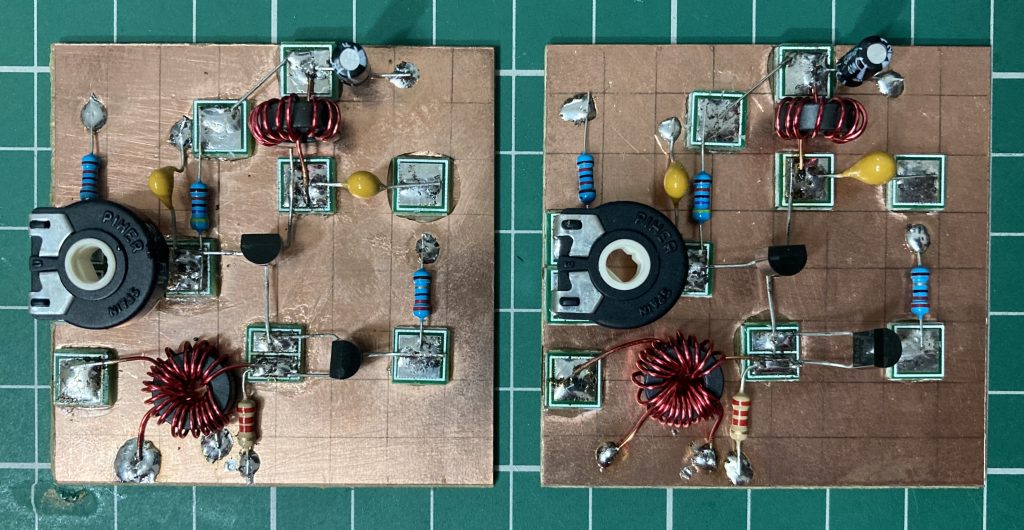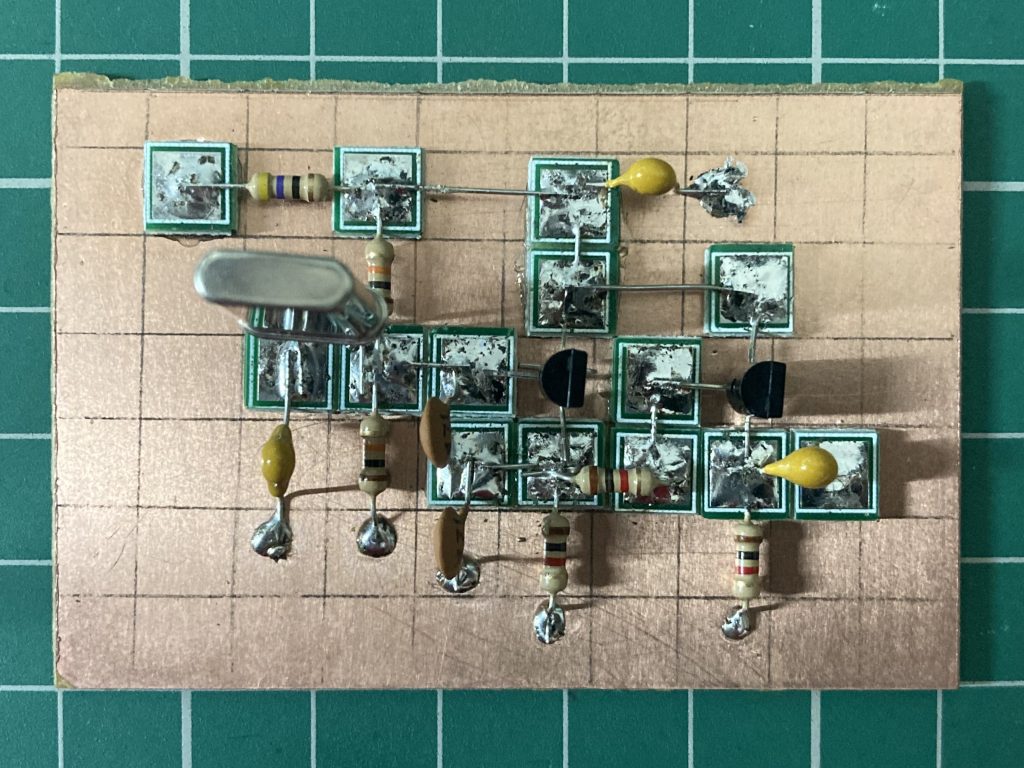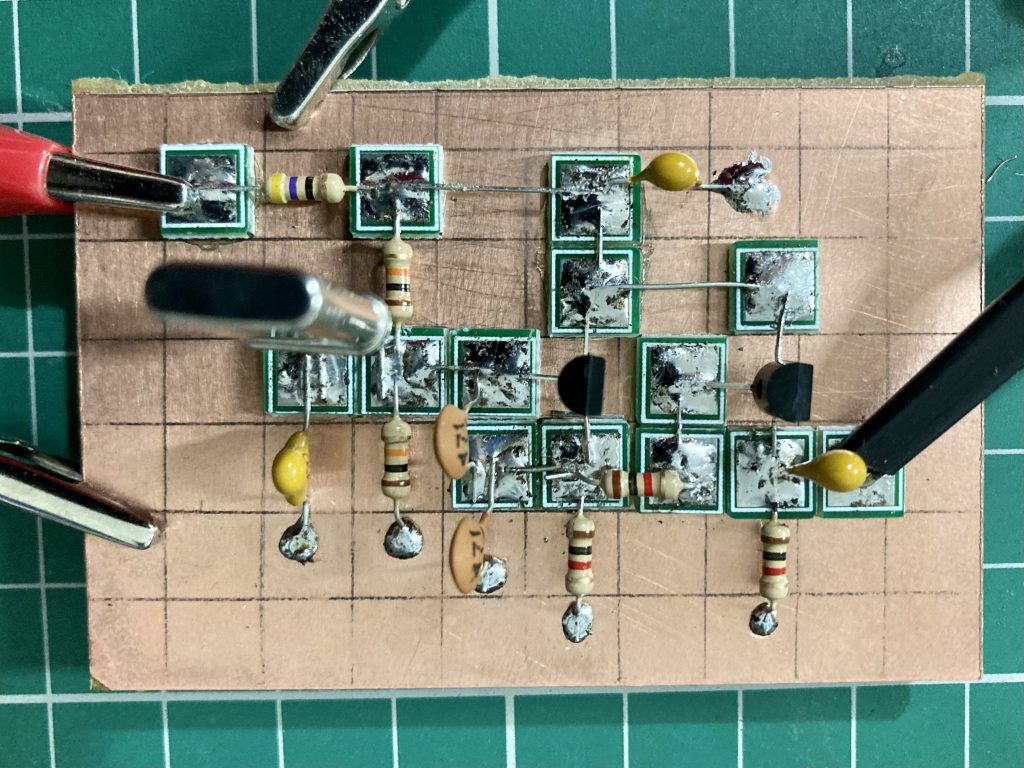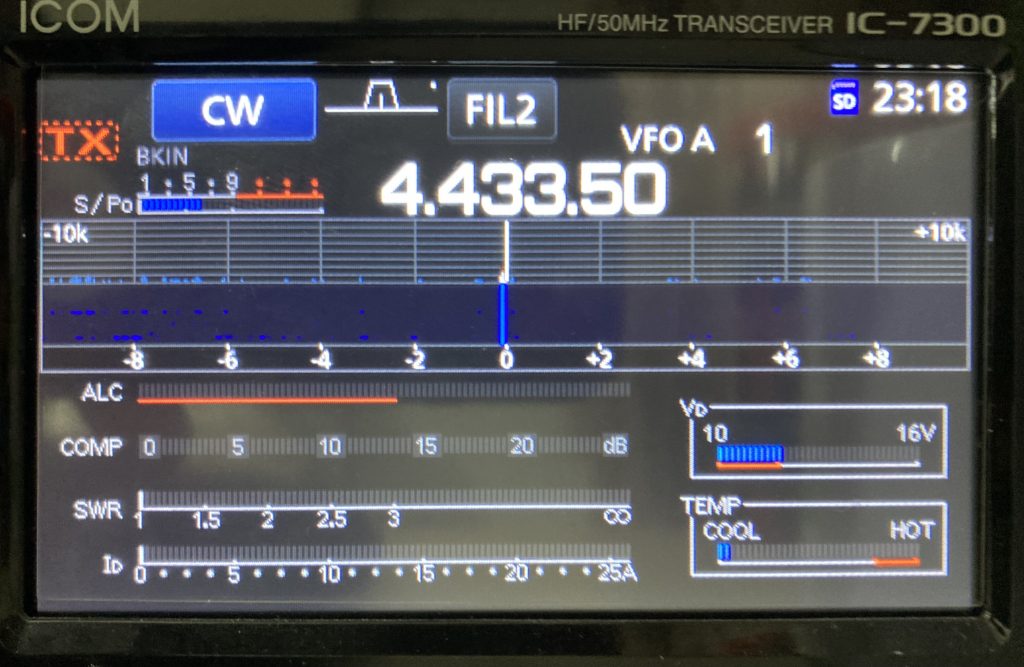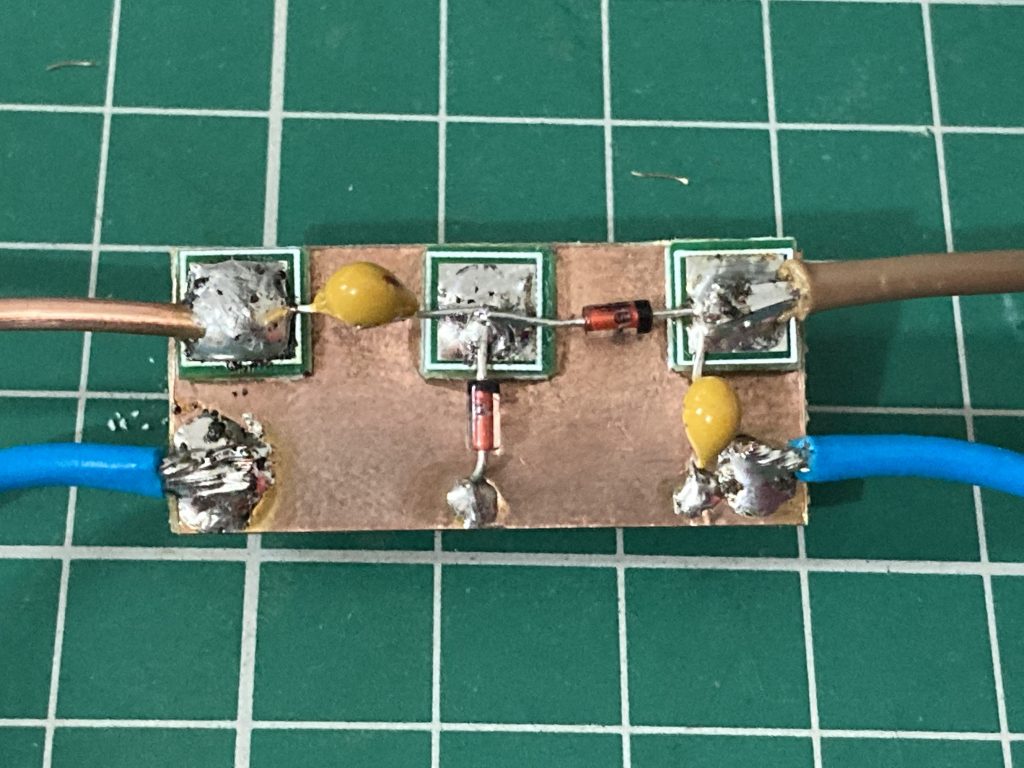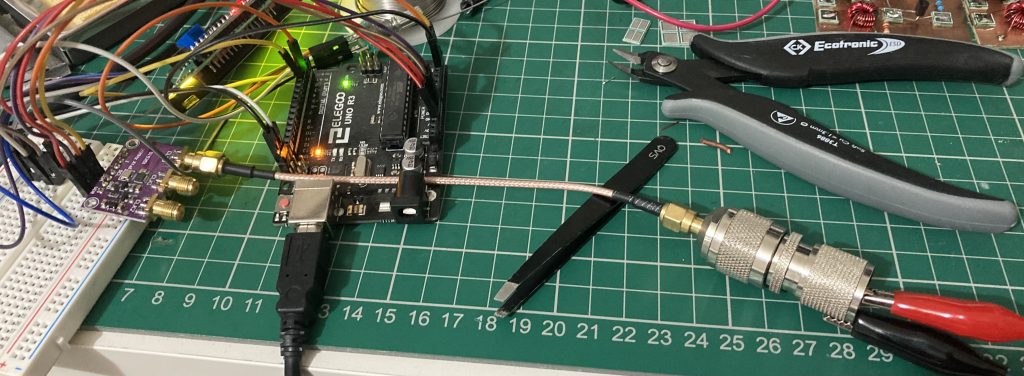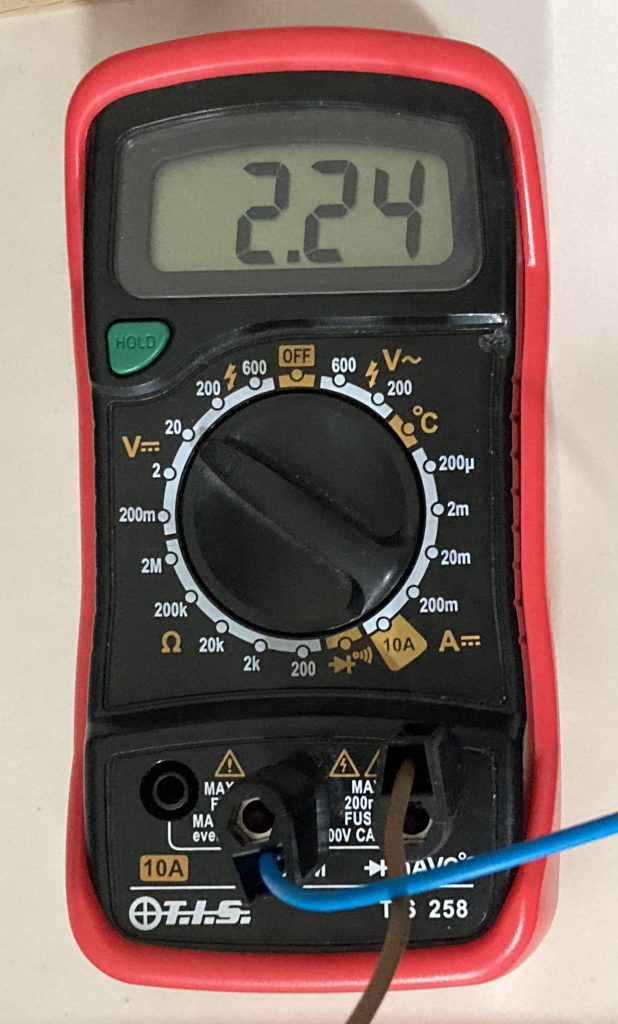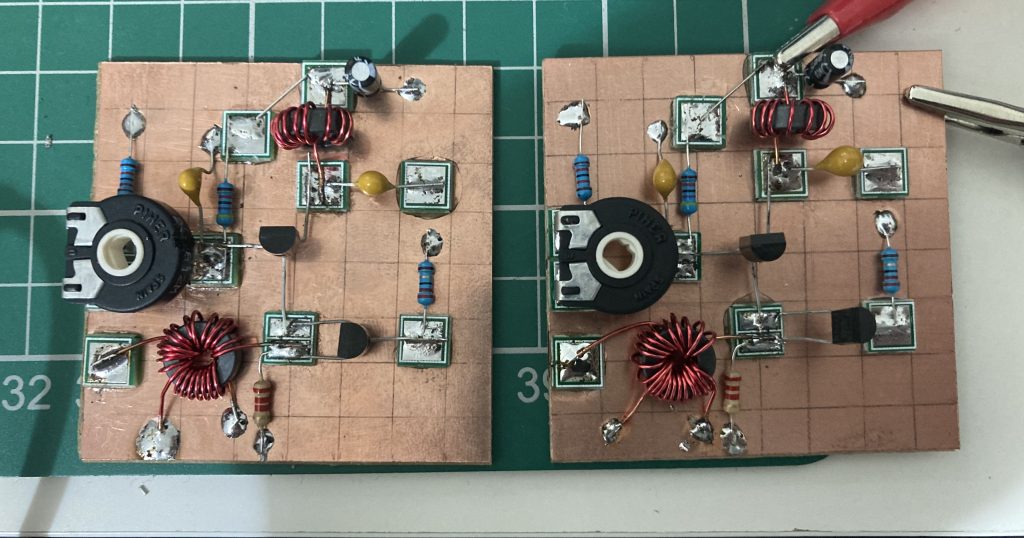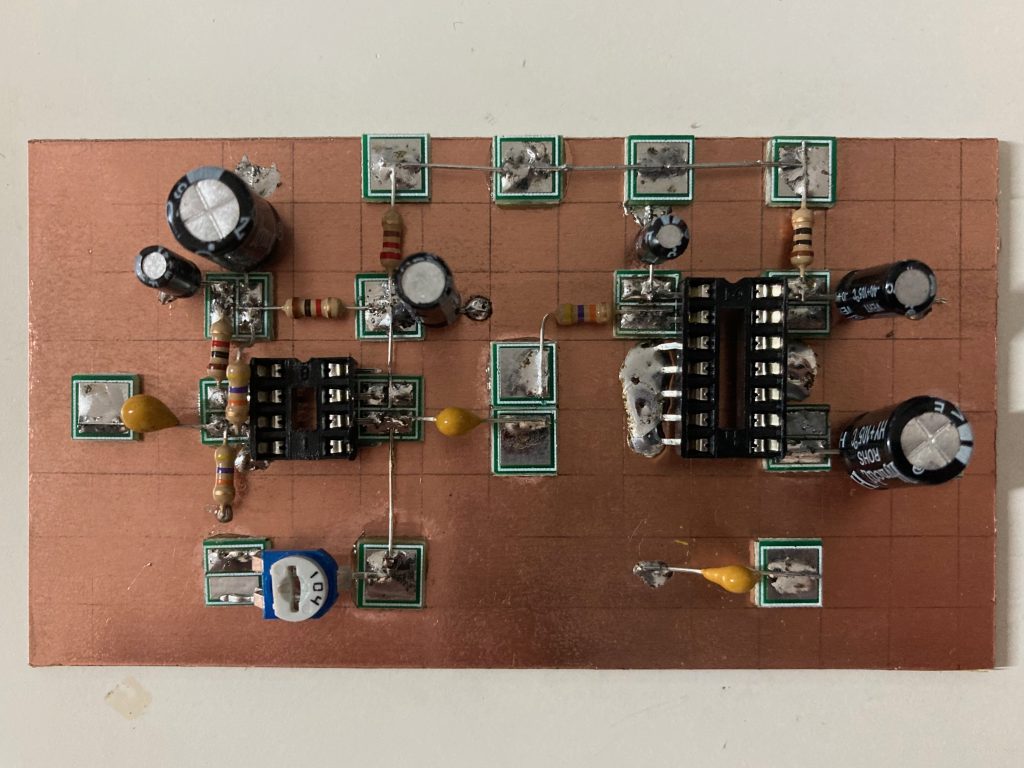This afternoon I had a few minutes spare so I rewound the incorrectly wound RF amp transformer, it’s wound in the opposite direction to the other one as for some reason that’s the direction I’d wound the 20 wind part and I thought I’d rewind the 3 winds rather than the 20 winds!
I still need to test the gain on these amps and tweak the bias, not got round to that yet.
